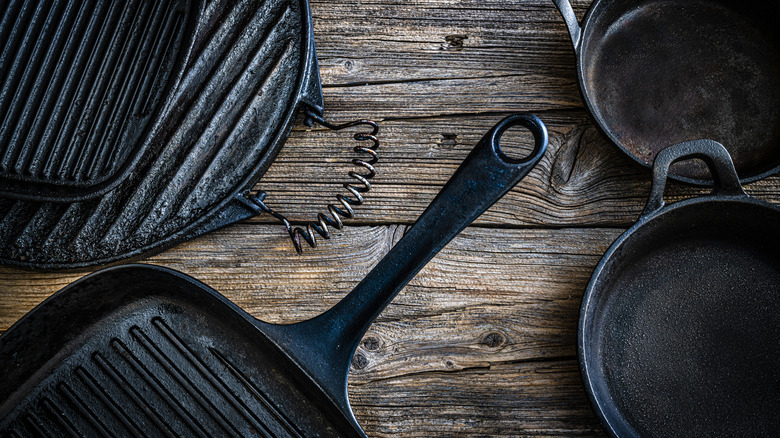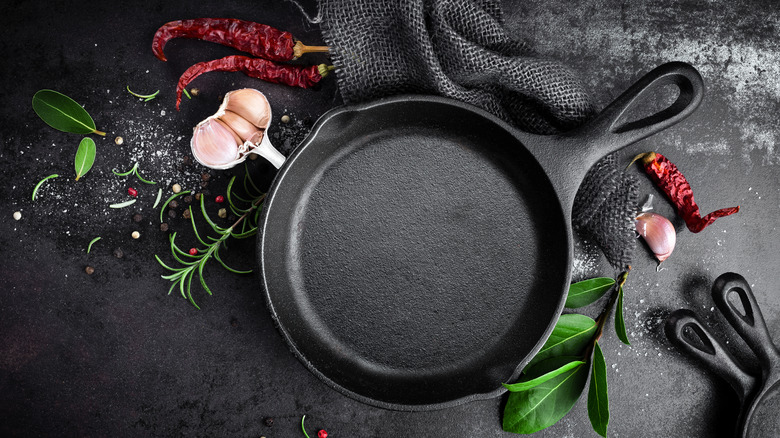The Tell-Tale Signs You Need A New Cast Iron Skillet
We may receive a commission on purchases made from links.
Cast iron pans are tough. Properly cared for, they can last generations. Even when they're abused, they can often be brought back to life with a little TLC. However, there are a few cases when it's best to let this cowboy cooking classic head off into the sunset.
If you spot a crack, the pan's a goner. Cracks usually happen due to drastic temperature changes –- for example, if you run cold water over a hot pan. A crack can trap food and bacteria and may continue growing every time you cook, with the potential of splitting open and causing burns or fires. The same goes for warping, which can be caused by heating or cooling the pan too fast. A warped pan that wobbles on the burner may not cook food evenly, and it can be unsafe if it's tipping back and forth while you cook. Finally, cleaning the pan with harsh chemicals or abrasive tools can sometimes lead to holes or pits, which can trap food and bacteria and can't be repaired.
Bringing an old pan back to life
Luckily, with the right approach, cast iron pans are easier to care for than you may have heard. Even a pan that's covered in rust or black residue can be brought back to working condition, as long as it doesn't have any structural defects. All you need is oil, a hot oven, and a bit of elbow grease.
The black flecks are nothing to worry about; they're just built-up seasoning that will subside in time. However, if you have a rusty pan, your first step is to scour off the oxidation with a metal pad and some soapy water. Lodge makes a rubber rust eraser that can also help you with this task. While you're doing this, you can start pre-heating your oven. You'll want it at 450-500 degrees Fahrenheit to reseason it.
Next, pour a little cooking oil onto the pan and use a paper towel to work it into the surface, both inside and out. Polyunsaturated fats like grapeseed and sunflower oils are ideal choices for this since they'll provide lasting protection along with neutral flavors that won't affect your food. Finally, place your pan in the hot oven upside down on the top rack with a drip pan beneath it, and bake it for about an hour. Allow it to cool gradually, and this workhorse of a pan should last for years — or even decades — to come.

